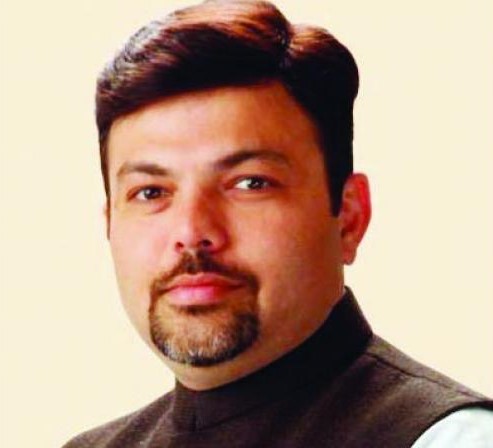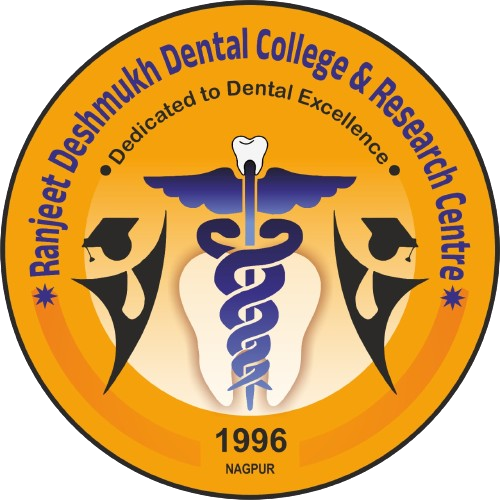Central India Journal of Dental Sciences Patrons

Shri Ranjeet Babu Deshmukh

Shri Ashish Deshmukh
Editorial Board
Executive Advisory Board
- Dr. Usha Radke
- Dr. Ramkrishna Shenoi
- Dr. Abhay Kolte
Editor-in-Chief
- Dr. Ashish Bodhade
Assistant Editor
- Dr.Anurag Chaudhary
Publisher
- VSPM DCRC NAGPUR
Advisory Board
- Dr. M. G. Pawar
- Dr. Rajiv Borle
- Dr. A. J. Pakhan
- Dr. V. K. Hazare
- Dr. Ram Thombare
- Dr. M. K. Gupta
The Central India Journal of Dental Sciences is one of the leading journals, publishing manuscripts in all branches of Dentistry. It is the official publication of VSPM Dental College & Research Centre, Nagpur, India. Journal strives for publishing high-quality research papers, reviews, case reports, short communications and technical notes in the field of Dentistry. Journal publishes the manuscripts with the aim to influence the practice of dentistry at clinical, research, and ethical level on National and International
basis.
Articles published in various filed of dentistry are Oral and dental disease, Prosthetics, Oral Pathology Oral & Maxillofacial Surgery, Periodontology, Endodontic, operative dentistry, Paediatric dentistry, Dental epidemiology, Orthodontics, Oral medicine and Radiology, Implantology, Evidence-based Dentistry, Dental Biomaterial, Bioethics & Dental Teaching Technology.
Journal also publishes short communication & technical notes. Conference proceedings are also welcome and expressions of interest should be communicated to the Editor.
Journals Policy:
The publishing standard of the journal is to be maintained by following stern guidelines. Representation of editorial board from all branches of dentistry. The English language is the only language in which a journal is published. The confidentiality of the peer review process is maintained by a journal. Regularity, timelines and wide coverage of readers. We follow international ethical and bioethical guidelines.
Abstracting and Indexing:
Journal is an index in Index Copernicus (2011, ICV-5.09 ), DOAJ, Rubriq Database, CiteFactor.
Publisher:
VSPM DCRC NAGPUR
Email: vspmdcrcnagpur@gmail.com
Printed At:
Shriniketan Printing Press, Sitabuldi, Nagpur (MS) India.
Email: shriniketanoffset@gmail.com
Information for subscribers
1. Annual Subscription:
Institutional- Rs. 5000/-
Individual- Rs. 2000/-/
2. Single Subscription:
Institutional- Rs. 1500/-
Individual- Rs. 800/-
Advertising Guidelines
Circulation: Available upon request
Specialty: Dentistry
Audience: Dental research scientists, materials scientists, clinicians, students of dentistry, dental materials and equipment manufacturers.
Advertisements are only accepted by exclusively on the basis of scientific relevance. Institute advertisements, material, and equipment related to dentistry, conference advertisements, scientific events, etc. The final decision will be of publishers and editors.
1. Full page 1 year (3 Issues)
Back outer page Rs. 25000/-
Back Inner page 20000/-
2. Half page 1 year (3 Issues)
Back outer page Rs. 18000/-
Back Inner page 10000/-
Contact Information
Editor
Central India Journal of Dental Sciences,
Department of Oral & Maxillofacial Pathology,
VSPM Dental College & Research Centre, 440019, Nagpur,
Maharashtra, India. Phone: 07104-306200, 306101,
306202 Fax: 07104-232904
Email: cijdsdental@gmail.com,
vspmdcrcnagpur@gmail.com
Disclaimer :
The Publisher & Editor cannot be held responsible for errors or any consequences arising from the use of information contained in this journal as well as the content of the manuscript/s; the views and opinions expressed do not necessarily reflect those of the Publisher, and Editors, neither does the publication of advertisements constitute any endorsement by the Publisher and Editors of the products advertised.
The Editorial Process
Manuscripts that are found suitable for publication in Central India Journal of Dental Sciences are sent to two or more expert reviewers. The journal follows a double-blind review process, wherein the reviewers and authors are unaware of each other’s identity. Every manuscript is also assigned to a member of the editorial team, who based on the comments from the reviewers takes a final decision on the manuscript. The comments and suggestions (acceptance/ rejection/ amendments in manuscript) received from reviewers are conveyed to the corresponding author. If required, the author is requested to provide a point by point response to reviewers’ comments and submit a revised version of the manuscript. This process is repeated until reviewers and editors are satisfied with the manuscript. Manuscripts accepted for publication are copy edited for grammar, punctuation, print style, and format. Page proofs are sent to the corresponding author. The corresponding author is expected to return the corrected proofs within a maximum of two days. It may not be possible to incorporate corrections received after that period. The whole process of submission of the manuscript to the final decision and sending and receiving proofs is completed by email.
Authorship Criteria
Each author should have participated sufficiently in the work to take public responsibility for appropriate portions of the content. One or more authors should take responsibility for the integrity of the work as a whole, from inception to published article. Authorship credit should be based on the i. sizeable contributions to conception or design of the work, or the acquisition, analysis, or interpretation of data for the work; ii. drafting of the work or revising it critically for important intellectual content; iii. final approval of the version to be published; iv. agreement to be accountable for all aspects of the work in ensuring that questions related to the accuracy or integrity of any part of the work are appropriately investigated and resolved. Each author should be accountable for the parts of the work he or she has done. In addition, each author should be able to identify which co-authors are responsible for specific other parts of the work and should have confidence in the integrity of the contributions of any coauthors.
All those designated as authors should meet all 4 criteria for authorship, and all who meet the 4 criteria should be identified as authors. Those who do not meet all 4 criteria should be acknowledged.
Scope of the journal
CIJDS journal publishes original research, review papers, case reports in all areas of dental fields including dental educational research and bioethics in dentistry.
Submission of contributions:
All submissions and correspondence should be addressed to the Editor, Central India Journal of Dental Sciences, VSPM Dental College & Research Centre, Digdoh Hills, Hingana Road, Nagpur, 440019. All articles submitted for publication are meant exclusively for publication in this journal and must be accompanied by duly filled copyright form and contributors form and if editors require an ethical committee approval form to be sent to cijdsdental@gmail.com.
Conflict of interests:
All vested interests must be declared by all the authors eg. Money received directly or indirectly for the study or for its presentation from all sources including commercial/pharmaceutical companies, and including gifts, travel perks, hospitality, etc.
Manuscripts:
1) Manuscripts must be submitted in precise, unambiguous, concise and easy to read English. 2) The number of authors should not exceed six for original research, 4 for review and case report.
Manuscripts should be submitted by email to cijdsdental@gmail.com along with a duly filled signed and scanned copyright form. They should be typed in the font: times new roman and in font-size: 12, only on one side of the A4 size paper with double spacing (space between two lines not less than 6 mm) and at least 2.5 cm margin on all sides.
Word limit:
Original article: Upto 3000 words (excluding abstract of 250 words and a maximum of 30 references).
Case report: Upto 1000 words (excluding abstract of 150 words and a maximum of 10 references).
Review article: Upto 4000 words (excluding abstract of 250 words and a maximum of 70 references).
Title page on a separate sheet of paper and should include:
a. Title of the article. b. Names and designations and emails of all authors. c. Affiliations (name of department, institution, city, pin code, state, and country where the work was done), indicating which authors are associated with which affiliation. d. The name, address, telephone, and fax numbers and e-mail address of the corresponding author.
Text (original article): The text should include the following:
Word limit: Up to 3000 words (excluding abstract and a maximum of 30 references).
The abstract should be structured containing titles like Introduction, materials & methods, results, and conclusion. It should not exceed a maximum of 250 words and be on the first page without abbreviations and references. Up to 6 keywords should also be given at the end of the abstract.
The introduction should define the reason for the study, the nature of the problem, and its relation to previous work, quoting the references by numbers within brackets in the order in which they are cited.
Materials and Methods should contain sources of special chemicals, kits, animals, case material and all the actual methods employed briefly with references. Use generic names with the trade name in parenthesis. All measurements must be in metric units and temperature in degrees Celsius. Use only standard abbreviations, symbols and acronyms that are universally accepted.
Ethics: All research studies should conform to ethical principles as laid down in the Helsinki declaration and it should be explicitly stated if permission of an IRB / human or animal ethics committee was taken.
Study Design:
Reports of randomized clinical trials should present information on all major study elements, including the protocol, assignment of interventions (methods of randomization, concealment of allocation to treatment groups), and the method of masking (blinding), based on the CONSORT Statement (http://www.consort-statement.org).
Results: Present the results in a logical sequence using appropriate, tables and figures without duplication. Results must include statistical analysis whenever applicable.
Discussion: Distinguish clearly new information from previous findings, and speculation from fact. Problems arising out of the study may be identified, and relevant hypotheses may be generated. Indicate the conclusions that may be drawn and place them in the context of a critical appraisal of previous work.
Acknowledgment: Acknowledgement of those who have actually contributed substantially to the study mentioning their contribution.
References: This should be numbered in order of citation in the text at the appropriate place in brackets in line with the text for e.g. (1). References, in the end, must be on separate sheets in serial order. They must be complete in Vancouver format. List all authors; if the number is seven or more, cite the first six names followed by et all. References must be given in the following format.
Articles Penner A, Timmons V. Seniors attitudes: oral health and quality of life. Int J Dent Hygiene 2004; 2:2-7.
Books Whittaker DK, MacDonald DG. Bite marks in flesh.In: Whittaker DK, MacDonald DG, editors. A Colour Atlas of Forensic Dentistry. London: Wolfe Medical Publications Ltd.; 1989.p. 26‑43.
Abstracts Nath N. Effect of certain compounds on the lysosomal stability in vitro. Proceedings of All India Seminar on Contemporary development in bioenergetics and membrane function. Waltair,1982:82.
Others Unpublished work, work in preparation, and personal communications should only be mentioned in the text and not used as references. Personal communication must carry the date of the communication. However, work accepted for publication should be included in the reference list as ‘In Press’ giving the name of the Journal. ‘Quoted by’ references are not accepted.
Responsibility: Authors are solely responsible for the accuracy of references
Tables: No table should exceed the limit of one page. Each table should be typed double spaced, on a separate sheet of paper, should carry a title and be serially numbered in Arabic numerals in the order of its first citation in the text. Each column should have a short heading with units of measure, if applicable, in parenthesis. Do not use vertical rules. Use horizontal rules only above and below column headings and at the bottom of the Table. Explanatory matter should only be given in footnotes using a, b, c, … as symbols sequentially. Matter given in a sentence or two in the text should not be repeated in the Table. Use graphs as an alternative to Tables with many entries. Statistical significance to be given as foot-note to the tables.
Figures (with Legend) and Photographs: To appear on separate pages and should be unmounted in black ink drawings of professional quality with clear lettering and numbered consecutively (I, II, etc). Only standard symbols should be used for figures. They should have a brief legend. Statistical significance to be given as foot-note to the figures. Photographs should be in colored glossy prints and if black and white there should be a sharp contrast between black and white areas. They should be 8 x 13 cm in size. If applicable a linear scale should be incorporated in the photograph or magnification stated. The word “Top” should be written in the appropriate place at the back of the photograph. A legend should be supplied for each photograph typed double spaced in consecutive order on a separate sheet of paper. Matter gives in a table must not be repeated as a figure.
Case report: Word limit: Up to 1000 words (excluding abstract of 150 words and a maximum of 10 references). Because of their rarity and innovative management, case reports of practical interest to clinicians will be accepted for publication. The case report should be arranged in the following order: - Abstract, Key-words, Introduction, Case History, Discussion and References.
Review article: It is expected that these articles would be written by individuals who have done substantial work on the subject or are considered experts in the field. A short summary of the work done by the contributor(s) in the field of review should accompany the manuscript.
Word limit: Up to 4000 words (excluding abstract of 250 words and a maximum of 90 references). Articles of current innovative interest extensively studied.The proof correction will be done by the Editors.
Copyright clearance: Copyright clearance for material/illustration that is not original must be obtained by the authors in writing from both the original authors and the publishers. That is the exclusive liability of author/authors.
Letter to the Editor: These should be short and decisive observations. They should preferably be related to articles previously published in the Journal or views expressed in the journal. They should not be preliminary observations that need a later paper for validation. The letter could have up to 500 words and 5 references. It could be generally authored by not more than four authors.
Other: Editorial, Guest Editorial, Commentary, and Opinion are solicited by the editorial board.

 Admission 2024-25
Admission 2024-25